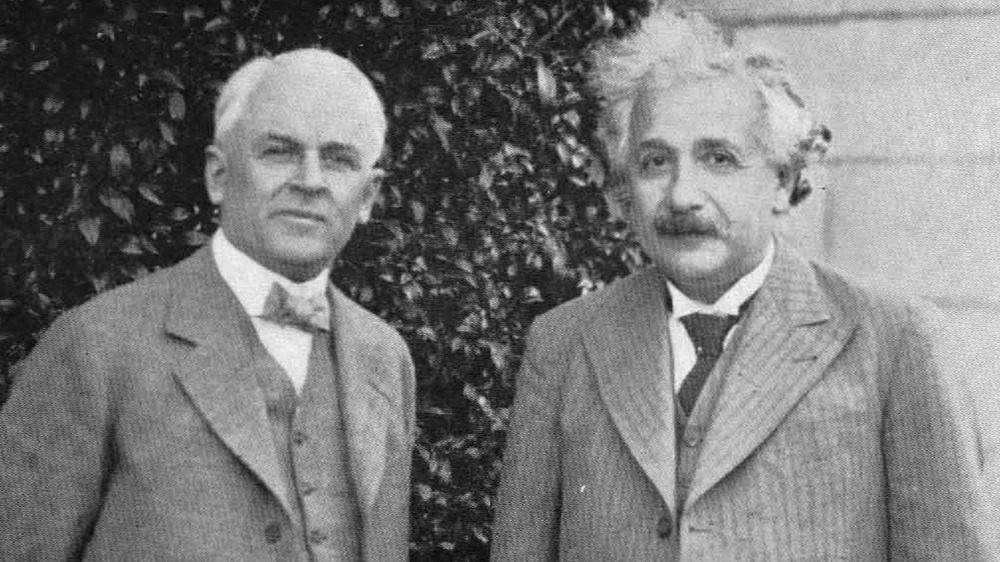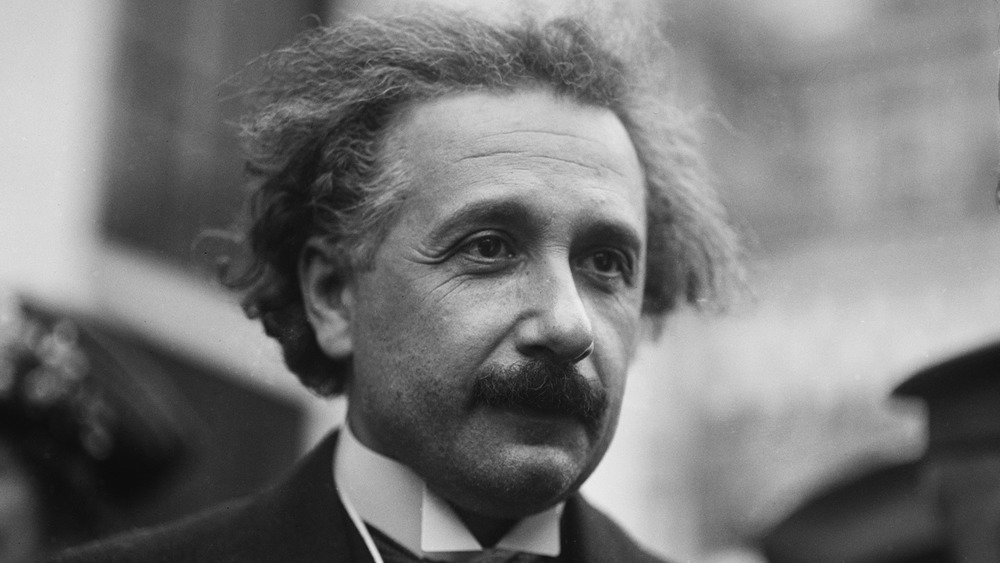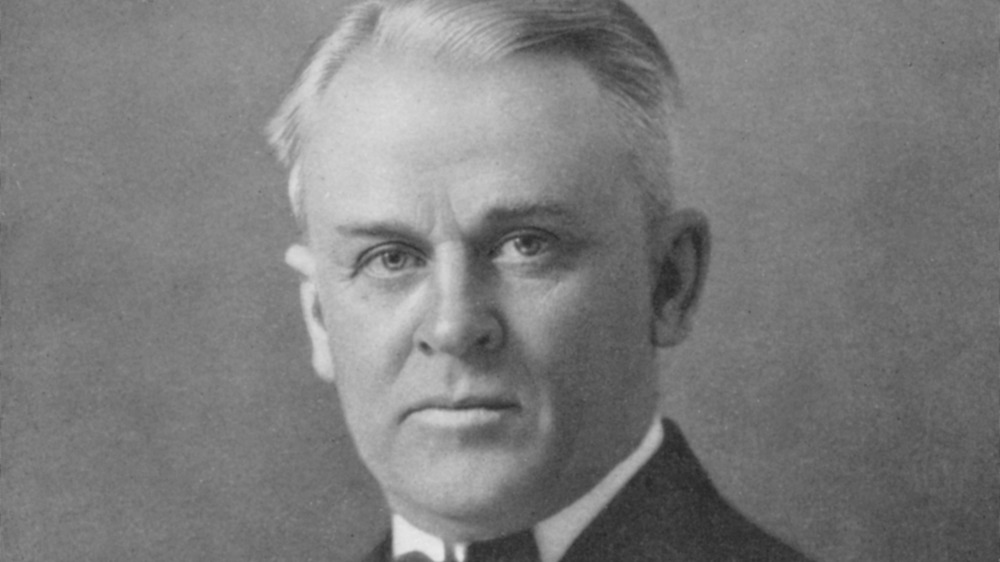How An Attempt At Disproving Einstein Led To Robert Millikan's Nobel Prize
As The Nobel Prize website succinctly tells us, Robert Andrews Millikan was awarded the Nobel Prize in Physics in 1923 "for his work on the elementary charge of electricity and on the photoelectric effect." Millikan was a pragmatist focused on the scientific method and experimental design; he used observation to come to conclusions. This practical approach is sometimes considered, erroneously so, at odds with someone like Albert Einstein, per Biography, whose theoretical approach gave us 1915's general theory of relativity; he used theory to generate observation. All scientific inquiry, though, strengthens science because it expands human knowledge of the universe.
Millikan was very much an engineer whose Nobel Prize derived from two separate contributions: the "oil drop experiment," which allowed for the first real way to measure electrons, and the "photoelectric experiment," which allowed a way to measure the emission of electrons from an electromagnetic source (light, in this case). The former experiment, as i09 overviews, is now famous. It involves placing two metal plates across from each other, and running voltage between them to generate an electric field (familiar even to high school students). The latter experiment, as Shmoop outlines, involves sending light of a particular wavelength at a metal plate, and measuring electrons as they subsequently escape from the metal.
The funny thing about the latter experiment, though, is that Millikan underwent it to disprove some of Einstein's work, particularly his 1921 Nobel Prize-winning work on the same topic: photoelectric energy. As a result, Millikan won his own Nobel Prize.
Millikan's distaste for Einstein's photoelectric work
It's not necessarily controversial that Millikan set out to disprove Einstein's work. After all, this is how the scientific method actually works: by falsifying possibilities to arrive at theory, and in the case of events that are absolutely predictable given particular conditions, law (like the ultra-famous Law of the Conservation of Energy, per Lumen). It's simply ironic that Millikan wound up winning a Nobel Prize in part because he had a distaste for another guy's Nobel Prize-winning work — in this case, Einstein's.
And to be sure, Millikan did have a distaste for it, as discussed on Science Blogs. Millikan was an ardent pragmatist who replied on experimental design to arrive at conclusions, and Einstein's work on the photoelectric effect was largely theoretical. In a January 1916 paper, Millikan starts off by saying, somewhat derisively, "Einstein's photoelectric equation for the maximum energy of emission of a negative electron under the influence of ultra-violet light... cannot in my judgment be looked upon at present as resting upon any sort of a satisfactory theoretical foundation."
Einstein's work, in this case, revolved around the now-commonly known nature of light: It behaves like a wave and a particle. In 1905, as the American Physical Society (APS) tells us, Einstein postulated that light traveled not in a continuous wave, but in "packets" — photons — that moved like waves, but retained the attributes of particles. Millikan thought that this sounded like rubbish, and set out to disprove it.
Millikan's work corroborated Einstein's theory
And so, Millikan built an experimental design precise enough to rival his own oil drop experiment. He attempted to make a perfect vacuum for energy to travel though, blocked out all stray light, ensured that the voltage was error-free, and checked and rechecked for any potential problems in his design. He directed light of a particular wavelength at a plate of metal, and built a detector to measure the particles that were released when the light struck the metal.
Einstein's theory, as cited on Springer Link, incorporated Planck's constant, h, which is a numerical value used to describe the oscillation frequency of photons. This frequency can be used to define the energy of a photon, while the quantity of photons relates to light's brightness. And so, when light strikes a surface, Einstein said that electrons ought to be released in discrete thresholds, since light was composed of "packets," or quanta.
Lo and behold: this is exactly what Millikan discovered. He admitted so begrudgingly, as the American Journal of Physics explains, and only at the end of his paper. In a perfectly underhanded way, he said, "... It must be admitted that the present experiments constitute very much better justification for such an assertion than has heretofore been found," and also, "Yet the semi-corpuscular theory by which Einstein arrived at his equation seems at present to be wholly untenable." It's not the results that Millikan disliked, though, but rather Einstein non-experimental method of attaining them.


